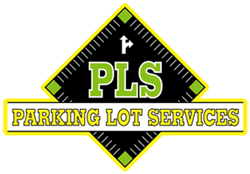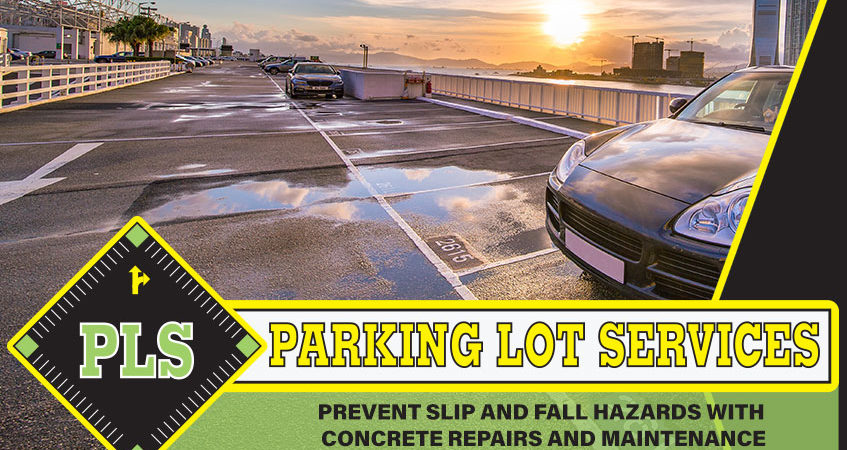How to prevent slip and fall injuries on your property.
Concrete is the most commonly used pavement construction material since it’s durable, reliable, easy to produce, and highly economical. However, it’s prone to premature distresses if the constructor fails to follow the primary fundamental pavement design considerations and factors. These damages can result in more severe problems such as slip and fall, if not repaired immediately. This post discusses common concrete issues, their causes, repair, and maintenance of concrete pavements.
Common Concrete Problems
Different types of concrete damages require different methods of repair. Knowing the kind of problem in your pavement helps you understand what to expect when you call concrete repair services. Common concrete issues that can cause slip and fall hazards include:
Cracking
Cracks start as fine hairlines and develop to moderately wide cracks if not repaired. Although they may not affect the load transfer capacity, they gradually deteriorate, damaging your pavement further. In most cases, these cracks occur as a result of:
- Too much or little vibration of dowel bar inserter
- Shallow depth of your pavement foundation
- Stiff concrete mix
- Natural reasons such as heavy solid settling around the dowels
Slight vibration and thick concrete mix leave a trail in the dowel where concrete is not properly compacted. Too much vibration, on the other hand, causes aggregates segregation in the dowel, which leads to water and slurry accumulation in the trail over the dowel. Consequently, the concrete shrinks in these locations leading to cracking.
Concrete Disintegration
Parking lot disintegration is a typical slip and fall hazard and occurs when the pavement breaks up into loose particles. The problem mostly occurs due to:
- Improper concrete curing and finishing
- Wrong concrete mixing ratios
- Using unsuitable aggregates
Sinking and Heaving
Pavement sinking is another common problem that may leave you wondering what caused your concrete to sink. There’re several reasons why it happens, but whatever the cause, you need to contact a company that offers concrete services. Leading causes for sunken concrete include:
- Soil changes- over time, the earth in which your concrete sits on shrinks, compacts, settles, or shifts depending on the type of soil. When that happens, the concrete is likely to sink.
- Soil loading capacity- different types of soil have various loading capacities. If the concrete exceeds the loading capacity of the earth, your parking lot will eventually sink.
- Animal burrowing- animals such as rodents may infest your property and burrow beneath the concrete slabs, displacing a significant amount of soil. With time, your concrete will sink to replace the spaces once filled by the earth. In the worst-case scenario, water may get into these burrows leading to more soil displacement.
- Poor artistry- working with a qualified concrete services provider prevents instances of poor craftsmanship such as poor soil compaction, failure to consider the type of soil, and potential water exposure during construction. Sunken concrete usually happens after the contractor is long gone, leaving you with a pavement prone to slip and fall.
Concrete Repair and Maintenance Techniques to Prevent Slip and Fall Hazards
Regular concrete curbing and pavement maintenance ensure that it withstands the amount of wear it experiences and to the elements. Having a professional evaluate and carry out necessary repairs minimizes cases of slip and fall and prolongs the lifespan of your concrete.
Concrete Cracking Repair
There’re different types of concrete crack repair methods depending on the cause and nature of cracks. These methods include:
- Epoxy injection- it’s used for narrow cracks, usually, 0.05mm wide. The contractor looks for entry and venting ports along the cracks and then injects epoxy under pressure to seal the cracks on exposed surfaces.
- Cracks sealing and routing- the method is most suitable in cases where structural repair is unnecessary. It involves enlarging the break and then filling it with an appropriate joint sealer.
- Stitching- the procedure is most suitable where tensile strength needs to be re-established along significant cracks. It involves drilling holes on both sides of the crack and inserting U-shaped stitching dogs to span the break.
Sinking and Heaving Concrete Repair
When your concrete curbing or pavement is sinking, you have the option to either repair or replace it. In cases where the concrete is dramatically deteriorated, it makes no sense to have it repaired. When that is the case, consider full replacement over repair. However, it’s essential to determine the initial cause of sinking; otherwise, the problem will happen again.
Mud jacking is a suitable concrete repair method if the concrete is not in a terrible condition even after sinking. It involves pumping grout through the settled concrete and pushing it up.
What to Do to Prevent Slip and Fall Hazards
Although common, your parking lot doesn’t have to be prone to slip and fall hazards. At Parking Lot Services, we offer concrete repair and maintenance services and have a track record of providing professional services to all our customers. Call us today if looking for concrete services in Tampa.

